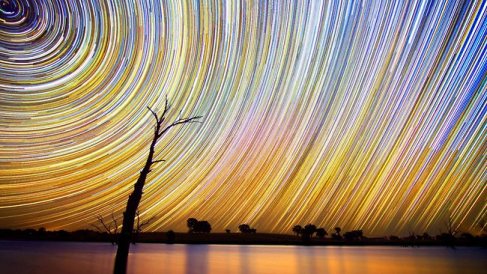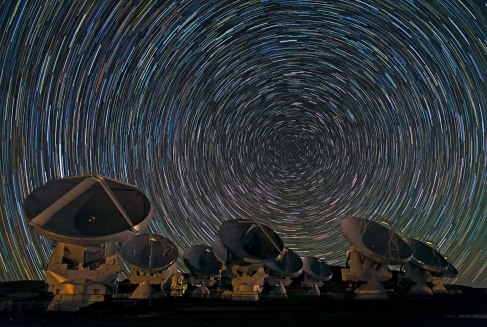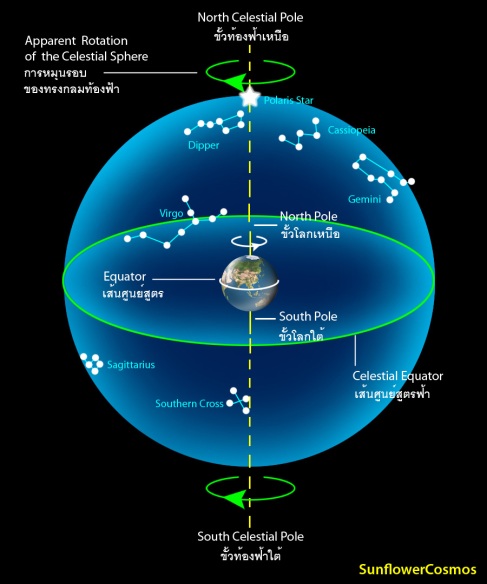I bet you’ve seen those long-exposure photographs of the night sky. Why do all the stars go in a circle? And what does this mean?
The stars always appear to circle around the north and south celestial poles. In the northern hemisphere, we are lucky enough to have a north polar star – Polaris (aptly named) marks the north celestial pole projected out on the sky. As the Earth rotates on its axis, Polaris appears to stay stationary on our sky; this means that throughout the night the other stars will trace large circular arcs around Polaris.
Since the Earth is rotating counterclockwise as viewed from above the solar system’s plane, we see the stars trace out a CCW pattern on our sky in the northern hemisphere.
Think about this brain-teaser: What about stars in the southern hemisphere? Do they go clockwise or counterclockwise around the celestial pole?
I’ve attached a learning tool – The white arrow over the Earth shows the direction of rigid rotation of the Earth (CCW), while the green arrows trace the apparent motion of the stellar sphere (stars). The trick is to place yourself on Earth looking away from Earth, and thus looking ‘up’ at the green circle in the northern hemisphere. Convince yourself that this arrow is pointing in a CCW direction, and thus stars’ apparent motion is CCW around the north celestial pole.
Notice that the Earth is a rigid body, meaning that stars will still rise in the east and set in the west in the southern hemisphere.
BUT, as you look out from the Earth in the southern hemisphere – and in this animation, this means looking “down” (although never ever use this terminology of down and up – this is just a northern-hemisphere-centric graphic). As you look “down” and away from Earth towards the south, the stars are indeed rotating clockwise.
So if you have enough time at night to track some star trails, you could determine your hemisphere.
Here are some star trails from Australia:
Fascinating.

